 July 9, 2015 John E. Ross, KD8IDJ, Editor
| |||||||||
Amateur Radio Becomes Primary on 1900-2000 kHz on August 6 Amateur Radio will be upgraded from secondary to primary in the 1900-2000 kHz segment of 160 meters in the US on August 6. That's the effective date of the WRC-07 implementation Report and Order and WRC-12 Order portions of a lengthy FCC document released on April 27. Both appeared in the Federal Register on July 7; the Notice of Proposed Rule Making (NPRM) of the same proceeding was published in the Federal Register on July 2. The Radiolocation Service (RLS) has been primary in the band segment. The FCC also made a secondary allocation of 135.7-137.8 kHz to the Amateur Service, but this band will not be available until service rules have been adopted.
The FCC said that while it had believed there was no non-Federal RLS use of the 1900-2000 kHz band, the record indicated there are maritime users, including the US "high seas" migratory species fishing fleets, making use of radio buoys in the Atlantic and Pacific oceans as well as within 200 nautical miles of the coast. It did not identify these users in the WRC-07 proceeding, however, "because they did not appear in its licensing database," it said. "Apparently, fishing vessels have operated radio buoys in US waters under the belief that a ship station license issued under Part 80 of the Commission's rules permits operation of the buoys," the FCC Order continued. The FCC said a Part 80 license applies only to stations in the maritime services and does not authorize operation of radio stations requiring a Part 90 license, "such as the radio buoys at issue here." The FCC said its action regarding 1900-2000 kHz supports increased use of 160 meters as reported by commenters in the proceeding and provides "spectrum support" for Amateur Radio emergency communication. The FCC said its action also offers the Amateur Service "the long-term security that primary status entails." In removing the primary RLS allocation, the FCC added a new footnote to the US Table of Allocations that provides for radio buoy operations in the 1900-2000 kHz segment on a primary basis in Region 2 (the Americas) and on a secondary basis in Region 3, which limits operations to the open sea. The FCC also concluded that it is in the public interest to establish a secondary Amateur Radio allocation at 135.7-137.8 kHz -- 2200 meters, although the new band is not yet authorized for amateur use. "In accordance with the WRC-07 Final Acts, the Commission also restricted use of this secondary Amateur Service allocation to amateur stations transmitting a maximum equivalent isotropically radiated power (EIRP) of 1 W." The Commission is inviting comments until August 31 on how it should structure operational rules for that allocation as well as for a proposed 472-479 kHz allocation, 630 meters. Read more. ARRL Patrons Donate Warhol Print to League; Auction Proceeds Will Create Endowment ARRL patron and well-known Hollywood producer Dave Bell, W6AQ, and his wife Sam, W6QLT (she's a quilter), have donated a signed Andy Warhol print to the ARRL. The artwork -- "Myths: Superman 1981" -- will be sold at auction and the proceeds used to create "The Dave Bell, W6AQ, Endowment Fund" to benefit the League. The print's value has been estimated to be in the vicinity of $150,000. Bell said he wanted to encourage other radio amateurs who might own valuable artworks to consider donating them to ARRL.
"I suspect that I'm not the only amateur art collector among the ham radio population," Bell told ARRL recently. "I'm not sure that it's ever occurred to any of these hams that one way to make a donation is to give a painting to the League." Bell, a ham since 1951 and a past chairman of the ARRL Public Relations Committee, acquired the Superman print in the early 1990s, and it hung in his Hollywood office for years. "I was looking around for a Warhol, and a friend of mine was an art dealer, and he came across this 'Superman' print and he gave me a very good price on it, so I bought it," Bell said. He once owned another Warhol, which he gave to Hiram College, his alma mater. Hollywood movie producer David Wolper sold the print to Bell, who said it had hung in Wolper's screening room for a decade or so. During his own working years, Bell was a television and movie producer. He started TV's "Unsolved Mysteries" and also produced some movies ("Nadia," "The Long Walk Home"). Amateur Radio was the focus of some of his productions, including "The World of Amateur Radio" and
"Amateur Radio Today." In 2003 the League presented Bell with its first Lifetime Achievement Award, for his work on films and videos about Amateur Radio. "I had an entertaining career," he punned. He was also the Dayton Hamvention® Amateur of the Year in 1984. His book World's Best Hobby, available from ARRL and elsewhere, details his professional and Amateur Radio lives. One reason he purchased the Superman print in particular, he said, was that he could imagine an Amateur Radio handheld in the Man of Steel's outstretched hand. "He should be 'Superham,'" Bell quipped. ARRL President Kay Craigie, N3KN, announced the donation in May at an ARRL donors' reception in conjunction with Dayton Hamvention®. "Dave and Sam have always supported ARRL most generously, and this latest gift to the Endowment Fund will ensure their support never stops," President Craigie told the gathering. "I would like to say 'thank you' for your thoughtful support. You are truly a 'Superman' to ARRL!" Read more. Museum Donates Doug DeMaw, W1FB, Homebrew Equipment to ARRL The Vintage Radio and Communications Museum of Connecticut (VRCMCT) has donated equipment designed by former ARRL staffer Doug Demaw, W1FB (SK), to ARRL Headquarters for exhibit. One of the most widely published technical writers in Amateur Radio, DeMaw -- who earlier held the call signs W1CER and W8HHS -- was on the HQ staff for 18 years, from 1965 to 1983, and he served as Senior Technical Editor and Technical Department Manager from 1970 to 1983. Beginning in 1970, he engineered a shift in emphasis toward solid-state design in QST and in The ARRL Handbook. After retiring in 1983, DeMaw founded Oak Hills Research, but he continued to write construction articles for QST as well as books, including W1FB's QRP Notebook and W1FB's Antenna Notebook.
"The ARRL has a significant collection of Amateur Radio-related historical documents and equipment," said ARRL Senior Test Engineer, Bob Allison, WB1GCM. "Besides the 'Evolution of Amateur Radio Equipment' exhibit at the Lab, we have a 'Made in the Lab' exhibit. Doug DeMaw and his Lab staff built equipment that many radio amateurs duplicated at home. They are an important part of the history of Amateur Radio and ARRL." It's still unclear just how the museum ended up with its collection of DeMaw project prototypes. With the exception of his famous "Tuna Tin" QRP transmitter, which was detailed in the May 1976 issue of QST and also appeared on its cover, DeMaw retained his projects after the articles about them had been published, in line with the HQ custom of that era. When DeMaw died in 1997, though, the whereabouts of many of his construction projects was unknown. Recently, Allison spotted something that looked familiar in a box of parts at the VRCMCT. Allison, who is a museum board member and ARRL historical collection curator, instantly recognized a receiver that DeMaw had featured in a series of articles. After some digging, more boxes containing other DeMaw construction projects were discovered. Apparently, an anonymous donor at some point had dropped off the items, some bearing Oak Hills Research stickers, at the museum. During an impromptu meeting conducted by Museum Director John Ellsworth, the museum board -- all ARRL members -- agreed that DeMaw's work belonged at ARRL Headquarters. "We're in the preservation business too," said Ellsworth. "We're glad to make this donation to ARRL, which will preserve and display DeMaw's work." Read more. Ham Radio Volunteers Support Oklahoma Freewheel Bicycle Ride A small group of Amateur Radio operators and volunteers supported the Oklahoma Freewheel -- a cross-state bicycle tour -- June 7-13. Kenneth Baucum, KG5CBM, led the Amateur Radio contingent. "This year, Freewheel started in Hollis, Oklahoma, and finished in Fort Smith, Arkansas," Baucum said. "Bicyclists completed a tour of about 500 miles in 7 days, completing an average of 65 miles each day." He said some of those in the ham radio contingent are also ARES volunteers.
"Common issues included flat tires, slipped chains, and shifters needing adjustment," Baucum said. "A few calls for medical support were handled by providing first aid, water, and shade or air conditioning for riders in distress." Oklahoma Freewheel expressed its appreciation to the radio amateurs who volunteered and to for the support of local radio clubs and the use of their repeaters. Read more. -- Thanks to Kenneth Baucum, KG5CBM, and Lloyd Colston, KC5FM Friedrichshafen HAM RADIO 2015 Hosts International Youth Gathering The just-ended HAM RADIO 2015 in Friedrichshafen, Germany hosted an international gathering of Amateur Radio youth. HAM RADIO sponsors reported that more than 17,000 visitors attended the combined HAM RADIO and the Maker World 2015 events -- about the same as in 2014. HAM RADIO celebrated its 40th year this year and attracted visitors from around the world to the shores of Lake Constance.
On Saturday, June 27, German Youth Coordinator Annette Coenen, DL6SAK, and IARU Region 1 Youth Working Group Chair Lisa Leenders, PA2LS, jointly hosted the International Youth Meeting. IARU Region 1 sponsors a "Youngsters On The Air" (YOTA) program -- a 1-week summer youth exchange program involving 75 youthful radio amateurs and prospective hams from 22 countries -- held this year in Italy. Region 1 also sponsors a YOTA Month program each December. One main discussion topic concerned the difficulty of obtaining an Amateur Radio license in some countries. Roadblocks cited included fees, minimum age, exam locations and levels, and availability of learning materials. Presentations included the introduction of the new Youth Contest Program in IARU Region 1, and the youth contesting initiative at 9A1A and 9A1RBZ -- the "Amateur Radio in School" station of the Croatian DX Club. An Amateur Radio course has been integrated into the elective courses at the Technical School Rudera Boskovica in Croatia.
Each year there is a beginner's class, and students who pass can participate in 9A1RBZ activities. Since 2012, some 165 youngsters have completed the class. Aspiring young contesters are paired with experienced contesters at 9A1A. In 2014, nine youngsters joined the world-class 9A1A team for the CQ World Wide RTTY contest. By this year, 39 percent of the Croatian DX Club members were between the ages of 16 and 19. "Youngsters are not interested only in mobile and Internet communications," the club concluded. "If you approach them in an appropriate way, they are recognizing Amateur Radio as a very interesting hobby." 9A1A will host an international youth contesting team twice a year starting in 2016. The IARU R1 Youth Contest Program plans to pair teams of about six visiting young operators with about six home country operators at well-known contest stations throughout Europe. It will get under way this fall with a four-contest 2015-2016 schedule. Several PowerPoint and synchronized-audio keynote lectures from HAM RADIO 2015 are available on the Documentary Archive website. Pioneering Remote Multi-Multi K4VV Contesting Station Closes, But Project Continues Due to health issues facing Jack Hammett, K4VV, the Virginia mountaintop station bearing his call sign that pioneered totally remote multioperator, multitransmitter (MM) contesting, has been shut down. The equipment is being dismantled and sold off. The K4VV remote multi-multi contest station project team won't be disbanding, however. Instead, it will transition from "Team K4VV" to "Team W0YR," operating from another Virginia station some 18 miles from the K4VV site, said Mike Lonneke, W0YR.
"This past winter's brutal conditions caused serious damage to antennas on three of the towers at the big K4VV contest station, sitting atop Virginia's Catoctin Ridge," Lonneke told ARRL. He said Hammett, a veteran contester, had built K4VV into a contest superstation, but more recent health problems had prevented him from being actively involved in the station's activities. The 20-member Team K4VV has been operating Hammett's station for the past 5 years at his invitation, and the contest enthusiasts turned K4VV into the first completely remote MM contesting superstation. With no operators in the K4VV shack, Team K4VV finished 10th in the ARRL International DX SSB this past March, with a claimed score of 5.3 million points. At the end of March, the team managed an 11th place claimed finish in the CQ World Wide WPX SSB, operating as AC3U, racking up 14.3 million points.
"Then, things came apart," Lonneke said. "The drive mechanism on K4VV's Super Bertha failed, boom guys on the top four element 40 meter OWA Yagi worked loose and hung down, endangering other antennas, and several other serious problems came to light." He said Team K4VV members were ready to carry out the repairs, but when Lonneke approached Hammett to have the work done, he learned that, in view of Hammett's worsening health, his family had decided to close the station. With its new name and renewed spirit, Team W0YR has begun planning to resume its totally remote MM contesting activities in earnest this September. W0YR recently took delivery of a new, additional tower. In June, Lonneke upgraded his station's vital Internet connection to equal the data throughput speeds that had been available at K4VV. "The team is getting ready to work the IARU HF World Champsionship in order to 'wring out' any faults," Lonneke told ARRL this week. "Even though there is no MM category in the IARU, we will run MM and turn in a checklog." Read more. -- Thanks to Mike Lonneke, W0YR UK Government Holds Up Export of Early Amateur Radio-Related TV Archive Most encyclopedias say that the first transatlantic television transmissions took place via the Telstar I satellite in 1962, but TV images actually crossed the Atlantic in the late 1920s via an Amateur Radio transmitter, according to historical accounts. An archive of documents and other material related to that event from television pioneer John Logie Baird and his colleague Benjamin Clapp, [G]2KZ,
is at risk of being exported, and the government doesn't want to see it leave Britain. Clapp's 2 kW transmitter was used to send the crude images to a receiving station near New York City, and the archive includes some of his Amateur Radio logbooks as well as a hand telegraph key. UK Culture Minister John Vaizey has declined to issue an export license in an effort to prevent the historic archive from leaving the UK. According to a UK government statement, Baird -- a Scottish engineer -- and Clapp first transmitted the television images over telephone lines from Baird's laboratory in London to Clapp's house in Surrey. From there, Clapp's transmitter, identified by his Amateur Radio call sign, was used to send the images across the Atlantic, where Clapp was among those on hand in Hartsdale, New York, to receive them. "Man's vision had spanned the ocean; transatlantic television was a demonstrated reality, and one more great dream of science was on the way to realization," said a February 9, 1928, account in The New York Times that cited an Associated Press reporter who witnessed the accomplishment. The Times article listed the operator of the "vision sound" receiving station as R.M. Hart, 2CVJ. The Times put Baird's feat on a par with Marconi's legendary transatlantic reception of the Morse code letter "s" many years earlier.
The archive, valued at more than $50,000, consists of Clapp's radio logbooks for the US receiving station as well as for his own [G]2KZ amateur station, plus "related paper ephemera," and a so-called "Phonovision" disc that contains an early video recording, made in the fall of 1927, depicting images of Baird's ventriloquist's dummy, "Stookie Bill." The Phonovision disc is believed to be the oldest surviving video recording. Baird had demonstrated his electro-mechanical television system to members of the Royal Institution a year earlier. Vaizey based his decision to bar the possible export of the items on a recommendation by the Reviewing Committee on the Export of Works of Art and Objects of Cultural Interest (RCEWA), administered by Arts Council England. "The Columbia disc and the notes connected with this world first of a transantlantic video recording represents British ingenuity and invention at the highest level," said RCEWA Member Christopher Rowell. "The notes contain the first ever use of the acronym 'TV' for television. The excitement of the achievement rests in these objects, which we hope will remain in this country as a permanent testament to Logie Baird and his team. Their departure abroad would also be a serious loss to scholarship." Read more. In Brief...
The K7RA Solar Update Tad Cook, K7RA, Seattle, reports: Solar activity perked up over the July 2-8 period, with average daily sunspot numbers increasing from 35.9 to 109.1, compared to the previous 7 days. Likewise, average daily solar flux increased from 100.7 to 123.2. Daily sunspot numbers were below 100 for June 16-July 3, bottoming out at 25 on June 27.
You can check how the daily 45-day forecast of solar flux has done historically. Click "Download this file." The latest prediction has solar flux at 125 for July 9-11; 122 on July 12; 120 on July 13, 115 on July 14-15; 125 on July 16; 130 on July 17-18; then 125, 115, 110, and 105 for July 19-22, then 100 on July 23-26; 105, 110, and 112 for July 27-29; 115 for July 30-31; 120 on August 1, and 125 on August 2-4. Solar flux then peaks at 130 for August 10-14, then goes to 100 after August 18. The planetary A index predictions are 5, 12, 25, and 20 for July 9-12; 8 on July 13-14; 5 on July 15-17; 8 on July 18-19; 5 for July 20-25; 8 on July 26, 5 for July 27-30; then 18, 25, and 12 for July 31-August 2; 5 for August 3-5; then 20 and 25 on August 6-7; 8 on August 8-9, and 5 for August 10-13. For the near term, USAF and NOAA predict the geomagnetic field at quiet levels on July 9, quiet to active levels July 10, and unsettled to minor storm levels on day July 11. In Friday's bulletin look for reports from readers, 6 meter updates, and updated forecasts. Send me your reports and observations. Just Ahead in Radiosport
See the ARRL Contest Calendar for more information. Upcoming ARRL Section, State, and Division Conventions and Events
Find conventions and hamfests in your area.
. . .
Subscribe to...
Free of charge to ARRL members...
| |||||||||
.jpg) "The FCC action with respect to 1900-2000 kHz reduces the possibility that we might suffer in the future from new Radiolocation Service deployments," said ARRL CEO David Sumner, K1ZZ. "On the other hand, we will have to put up with radio buoys that have been operating illegally in the band but that now have been 'regularized' by the Commission."
"The FCC action with respect to 1900-2000 kHz reduces the possibility that we might suffer in the future from new Radiolocation Service deployments," said ARRL CEO David Sumner, K1ZZ. "On the other hand, we will have to put up with radio buoys that have been operating illegally in the band but that now have been 'regularized' by the Commission."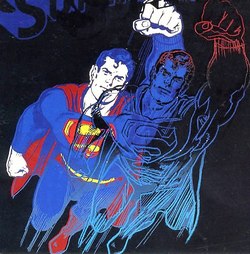
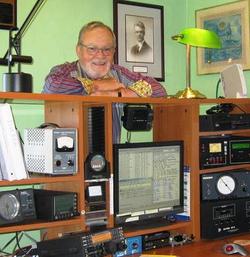
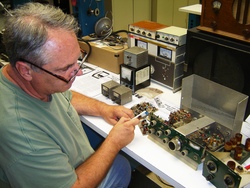
 Baucum said SAG support driver responsibilities included carrying water to replenish rest stops and rider water bottles on the route, as well as having spare tubes and tire pumps on hand to fix flat tires. "Cyclists would request support by flagging down a support vehicle, or calling the support number," he said. Baucum then would relay messages, as appropriate, to the driver nearest the incident.
Baucum said SAG support driver responsibilities included carrying water to replenish rest stops and rider water bottles on the route, as well as having spare tubes and tire pumps on hand to fix flat tires. "Cyclists would request support by flagging down a support vehicle, or calling the support number," he said. Baucum then would relay messages, as appropriate, to the driver nearest the incident.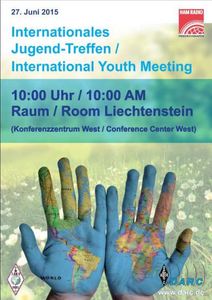 "HAM RADIO 2015 went really well," said Steffen Schöppe, DL7ATE, chairman of the German Amateur Radio Club (DARC), which co-sponsored HAM RADIO and marked its 65th anniversary this year. "It met our expectations in every way. We are very pleased with the supporting program, such as teacher training, the Ham Rally, and the presentations."
"HAM RADIO 2015 went really well," said Steffen Schöppe, DL7ATE, chairman of the German Amateur Radio Club (DARC), which co-sponsored HAM RADIO and marked its 65th anniversary this year. "It met our expectations in every way. We are very pleased with the supporting program, such as teacher training, the Ham Rally, and the presentations.".jpg)
.jpg)
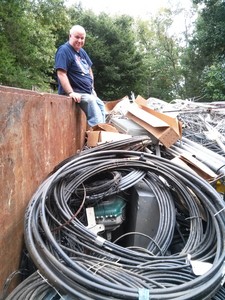

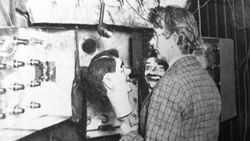
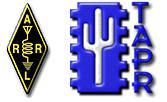 ARRL/TAPR Digital Communications Conference Seeks Papers: The 34th annual ARRL/TAPR Digital Communications Conference (
ARRL/TAPR Digital Communications Conference Seeks Papers: The 34th annual ARRL/TAPR Digital Communications Conference (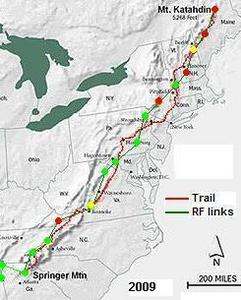 Get Ready for the Golden Packet Event! APRS Developer Bob Bruninga, WB4APR, has invited radio amateurs to take part in the annual
Get Ready for the Golden Packet Event! APRS Developer Bob Bruninga, WB4APR, has invited radio amateurs to take part in the annual 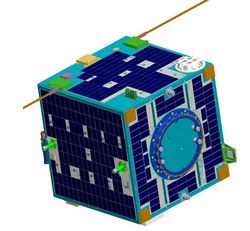 CAMSAT Renames, Postpones Six-Satellite Launch: CAMSAT has announced new nomenclature for the
CAMSAT Renames, Postpones Six-Satellite Launch: CAMSAT has announced new nomenclature for the %20senior%20KPH%20op%20sent%20last%20msg%20in%201997.jpg) MRHS "Night of Nights 2015" Set for July 12: The Marine Radio Historical Society (
MRHS "Night of Nights 2015" Set for July 12: The Marine Radio Historical Society (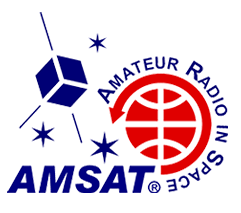 AMSAT 2015 Symposium Invites Papers: AMSAT has issued the first call for papers for its Annual Meeting and Space Symposium, set for October 16-18 in Dayton, Ohio. Proposals for papers, symposium presentations and poster presentations are invited on any topic of interest to the amateur satellite community. AMSAT requests a tentative title no later than August 1. Final copy must be submitted by September 15 for inclusion in the printed proceedings. Abstracts and papers should be sent to
AMSAT 2015 Symposium Invites Papers: AMSAT has issued the first call for papers for its Annual Meeting and Space Symposium, set for October 16-18 in Dayton, Ohio. Proposals for papers, symposium presentations and poster presentations are invited on any topic of interest to the amateur satellite community. AMSAT requests a tentative title no later than August 1. Final copy must be submitted by September 15 for inclusion in the printed proceedings. Abstracts and papers should be sent to 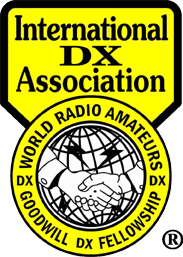 International DX Association Encourages Humanitarian Dimension to DXpeditions: The International DX Association (
International DX Association Encourages Humanitarian Dimension to DXpeditions: The International DX Association (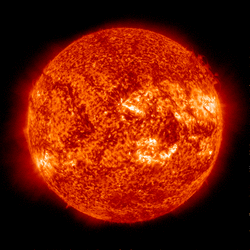 A moderate geomagnetic storm July 4-5 was caused by a solar wind stream. The mid-latitude A index from Fredericksburg, Virginia, for July 4-6 was 21, 16, and 9. The planetary A index, based on observations from a number of Northern Hemisphere magnetometers, was 19, 25, and 10 for the same days, and the college A index from Fairbanks, Alaska was 13, 31, and 18. The July 8 outlook predicted solar flux over the following 7 days at 121.1.
A moderate geomagnetic storm July 4-5 was caused by a solar wind stream. The mid-latitude A index from Fredericksburg, Virginia, for July 4-6 was 21, 16, and 9. The planetary A index, based on observations from a number of Northern Hemisphere magnetometers, was 19, 25, and 10 for the same days, and the college A index from Fairbanks, Alaska was 13, 31, and 18. The July 8 outlook predicted solar flux over the following 7 days at 121.1.







